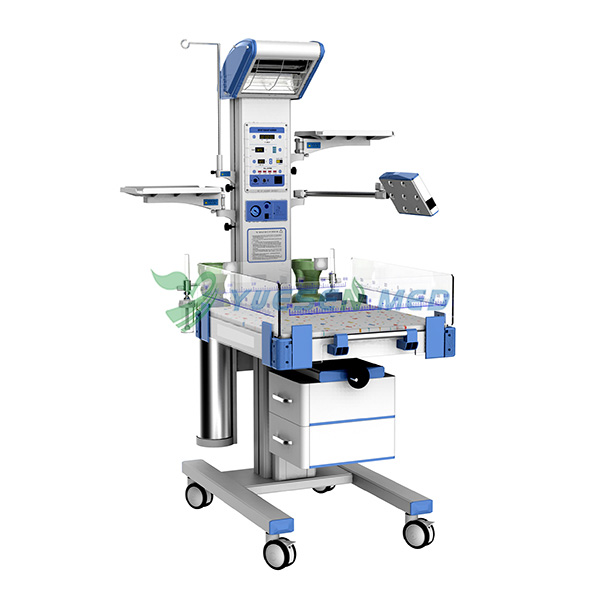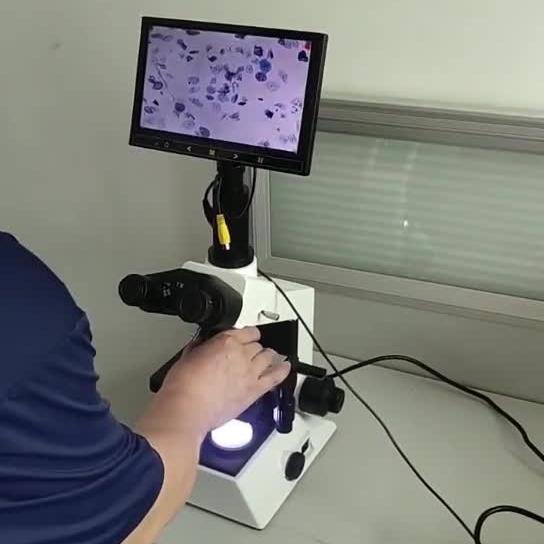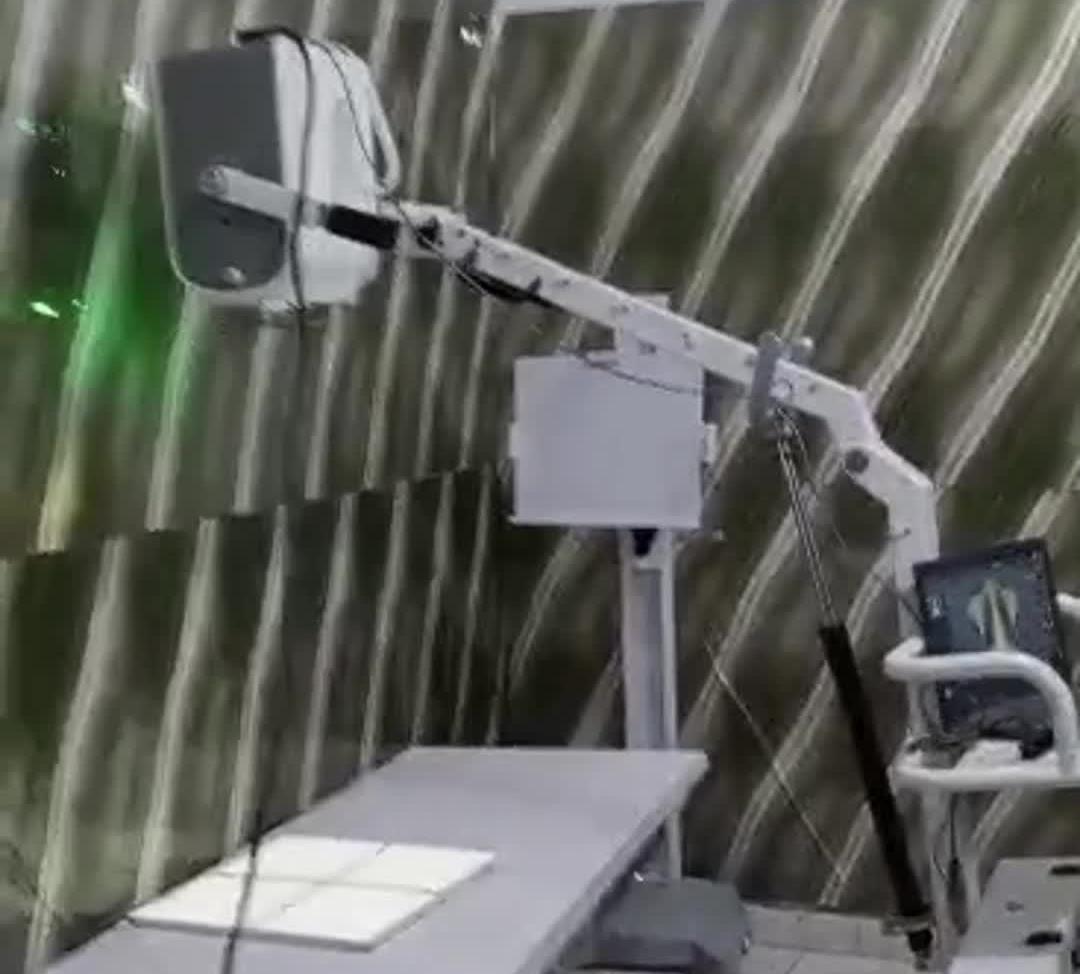Hot Products
YSX500D 50kW DR system set up and put into service in Cambodia.
YSENMED YSX500D 50kW digital x-ray system has been successfully set up and put into service in a hospital in Cambodia.
YSX056-PE serving as a vehicle-mounted x-ray in the Philippines
YSX056-PE 5.6kW portable x-ray unit has been adapted to fit on a truck, to provide mobile x-ray examination service for remote communities in the Philippines.
X Ray Machine To Zimbabwe
x ray machine, 50KW x ray machine
Microscope To Malawi
Achromatic objectives: 4X、10X、40X(S), 100X(S、Oil) Wide field eyepiece: WF10X(WF16X for option) Eyepiece head: Sliding binocular head inclined at 45° Stage: Double layer mechanical stage size 140X140mm, moving range 75X45mm Focusing: Coaxial coarse and
What is an Infant Radiant Warmer?
Views : 61
Update time : 2025-04-12 11:08:00
When it comes to caring for newborns, especially those who are premature or have low birth weight, every little detail matters. One of the unsung heroes in neonatal care is the infant radiant warmer. But what exactly is it? Let's dive into the world of infant care and explore the ins and outs of this vital device.

2. Control Panel: Allows healthcare providers to set and monitor the temperature.
3. Temperature Sensors: These sensors help maintain the desired warmth, adjusting the heat output as needed.
4. Access Panels: These provide easy access for doctors and nurses to examine and treat the baby without removing them from the warmer.
Equipped with additional features such as phototherapy lights for treating jaundice, these warmers offer more comprehensive care for at-risk infants.
These are portable units designed for transporting infants between departments within a hospital. They ensure that the baby stays warm during transfers.
The direct heat from the lamps can potentially cause skin burns if not properly managed. Caregivers must ensure that the baby's skin is not in direct contact with the heat source for prolonged periods.
Like any medical equipment, regular maintenance and checks are essential to ensure the warmers are functioning correctly. Hospitals must adhere to strict protocols to keep these devices in top shape.
For infants recovering from surgery or those facing health challenges, maintaining a stable temperature can significantly impact their recovery process. Radiant warmers play a crucial role in this aspect of care.
With easy access to the baby, parents can participate in care routines, such as skin-to-skin contact, while the infant remains warm and monitored. This bonding experience is vital for both the baby and the parents.
In the world of neonatal care, the infant radiant warmer stands out as a vital tool for ensuring the health and safety of our tiniest patients. By providing warmth, facilitating medical interventions, and supporting recovery, these devices play an indispensable role in the journey of newborns, especially those who need a little extra help. Understanding their function and importance can empower parents and caregivers alike, ensuring that every baby gets the best start possible in life. So, the next time you hear about an infant radiant warmer, remember—it's more than just a piece of equipment; it's a lifeline for our most vulnerable little ones!
An infant radiant warmer differs from an incubator in that it provides direct heat to the baby without enclosing them in a closed environment. While incubators create a controlled atmosphere with humidity and temperature regulation, radiant warmers allow for easy access to the baby for medical assessments and interventions while still providing warmth.
While infant radiant warmers are generally safe and effective, there are some risks involved. The primary concerns include the potential for overheating or skin burns if the heat source is not properly managed. Healthcare providers must closely monitor the baby's temperature and ensure that the heat is appropriately directed to avoid these issues.
The decision to place a newborn in a radiant warmer is typically made by healthcare providers, such as neonatologists or pediatricians. Factors influencing this decision include the infant's birth weight, gestational age, overall health status, and the need for immediate medical interventions.
The duration a baby can stay in an infant radiant warmer varies based on their individual needs. Generally, they are used until the infant can maintain a stable body temperature independently, which may take from a few hours to several days, depending on their health and gestational age. Regular assessments by healthcare providers will determine the appropriate time for transitioning the baby out of the warmer.

Understanding the Basics
What is an Infant Radiant Warmer?
An infant radiant warmer is a medical device designed to provide warmth to newborns. Unlike traditional incubators, which enclose the baby in a controlled environment, radiant warmers expose the baby to direct heat while allowing for easy access for medical staff. This is crucial in neonatal units where quick interventions may be necessary.Why Do Newborns Need Heat?
Newborns, particularly those born prematurely, often struggle to maintain their body temperature. They have a higher surface area-to-volume ratio, which means they can lose heat quickly. Keeping them warm is essential for their survival and overall health. That's where radiant warmers come into play!How Does It Work?
The Mechanism Behind the Warmth
Radiant warmers use infrared heat lamps to warm the baby. The heat is directed specifically to the infant, allowing for effective temperature regulation without overheating surrounding areas. This targeted approach is vital in a hospital setting where multiple babies may need care simultaneously.Key Components of an Infant Radiant Warmer
1. Heat Source: Typically, this is an overhead infrared lamp.2. Control Panel: Allows healthcare providers to set and monitor the temperature.
3. Temperature Sensors: These sensors help maintain the desired warmth, adjusting the heat output as needed.
4. Access Panels: These provide easy access for doctors and nurses to examine and treat the baby without removing them from the warmer.
Benefits of Using an Infant Radiant Warmer
Immediate Access for Medical Care
One of the biggest advantages of radiant warmers is the ease of access they provide. Medical staff can perform necessary procedures, such as monitoring vital signs or administering medications, without needing to move the infant to another location.Controlled Environment
Radiant warmers allow caregivers to maintain a stable temperature, reducing the risk of hypothermia. This controlled environment is crucial for infants who may have difficulty regulating their body temperature.Enhanced Monitoring
Many modern radiant warmers come equipped with advanced monitoring systems. These systems track the baby's temperature, heart rate, and other vital signs, providing real-time data to healthcare providers.Types of Infant Radiant Warmers
Standard Radiant Warmers
These are the most commonly used types in hospitals. They provide basic heating and monitoring functionalities.
Advanced Radiant Warmers
Equipped with additional features such as phototherapy lights for treating jaundice, these warmers offer more comprehensive care for at-risk infants.
Transport Radiant Warmers
These are portable units designed for transporting infants between departments within a hospital. They ensure that the baby stays warm during transfers.
Safety Considerations
Monitoring Temperature Closely
While radiant warmers are designed to regulate temperature, it's crucial for healthcare providers to monitor the infant closely. Overheating can be just as dangerous as hypothermia.
Avoiding Skin Burns
The direct heat from the lamps can potentially cause skin burns if not properly managed. Caregivers must ensure that the baby's skin is not in direct contact with the heat source for prolonged periods.
Regular Maintenance
Like any medical equipment, regular maintenance and checks are essential to ensure the warmers are functioning correctly. Hospitals must adhere to strict protocols to keep these devices in top shape.
The Role of Radiant Warmers in Neonatal Care
Supporting Premature Infants
Premature infants often lack the fat reserves needed to maintain body heat. Radiant warmers provide the necessary warmth to support their growth and development in those critical first days.
Enhancing Recovery
For infants recovering from surgery or those facing health challenges, maintaining a stable temperature can significantly impact their recovery process. Radiant warmers play a crucial role in this aspect of care.
Facilitating Parental Bonding
With easy access to the baby, parents can participate in care routines, such as skin-to-skin contact, while the infant remains warm and monitored. This bonding experience is vital for both the baby and the parents.
Conclusion
In the world of neonatal care, the infant radiant warmer stands out as a vital tool for ensuring the health and safety of our tiniest patients. By providing warmth, facilitating medical interventions, and supporting recovery, these devices play an indispensable role in the journey of newborns, especially those who need a little extra help. Understanding their function and importance can empower parents and caregivers alike, ensuring that every baby gets the best start possible in life. So, the next time you hear about an infant radiant warmer, remember—it's more than just a piece of equipment; it's a lifeline for our most vulnerable little ones!
FAQ
What is the primary purpose of an infant radiant warmer?
The primary purpose of an infant radiant warmer is to provide a controlled source of heat to newborns, especially those who are premature or have low birth weight. These devices help maintain the infant's body temperature, which is crucial for their survival and overall health, particularly in the first few days after birth.
How does an infant radiant warmer differ from an incubator?
An infant radiant warmer differs from an incubator in that it provides direct heat to the baby without enclosing them in a closed environment. While incubators create a controlled atmosphere with humidity and temperature regulation, radiant warmers allow for easy access to the baby for medical assessments and interventions while still providing warmth.
Are there any risks associated with using an infant radiant warmer?
While infant radiant warmers are generally safe and effective, there are some risks involved. The primary concerns include the potential for overheating or skin burns if the heat source is not properly managed. Healthcare providers must closely monitor the baby's temperature and ensure that the heat is appropriately directed to avoid these issues.
Who decides if a newborn needs to be placed in a radiant warmer?
The decision to place a newborn in a radiant warmer is typically made by healthcare providers, such as neonatologists or pediatricians. Factors influencing this decision include the infant's birth weight, gestational age, overall health status, and the need for immediate medical interventions.
How long can a baby stay in an infant radiant warmer?
The duration a baby can stay in an infant radiant warmer varies based on their individual needs. Generally, they are used until the infant can maintain a stable body temperature independently, which may take from a few hours to several days, depending on their health and gestational age. Regular assessments by healthcare providers will determine the appropriate time for transitioning the baby out of the warmer.
Related News
Read More >>
 Introduction video of YSENMED YSXWJ-BX301B Digital Biological Microscope.
Introduction video of YSENMED YSXWJ-BX301B Digital Biological Microscope.
Apr .01.2025
Here we share the introduction video of YSENMED YSXWJ-BX301B Digital Biological Microscope.
 YSDR-VET320 veterinary DR & YSB-DU10V color ultrasound serving well in Kiram Veterinary Surgery in Uganda
YSDR-VET320 veterinary DR & YSB-DU10V color ultrasound serving well in Kiram Veterinary Surgery in Uganda
Mar .31.2025
Kiram Veterinary Surgery in Uganda shares the clear images they have got from YSDR-VET320 veterinary digital x-ray system and YSB-DU10V vet color ultrasound machine.
 YSENMED YSFPD-R1012C mammo flat panel detector introduced and set up in a hospital in Senegal
YSENMED YSFPD-R1012C mammo flat panel detector introduced and set up in a hospital in Senegal
Mar .30.2025
Senegalese hospital has upgraded its analog mammography x-ray system with YSFPD-R1012C mammo flat panel detector, and the images come out clear.
 YSX-mDR5A 5.3kW mobile DR system working fine in a clinic in Gambia
YSX-mDR5A 5.3kW mobile DR system working fine in a clinic in Gambia
Mar .29.2025
YSENMED YSX-mDR5A 5.3kW mobile digital x-ray unit is working well in a clinic in Gambia.



